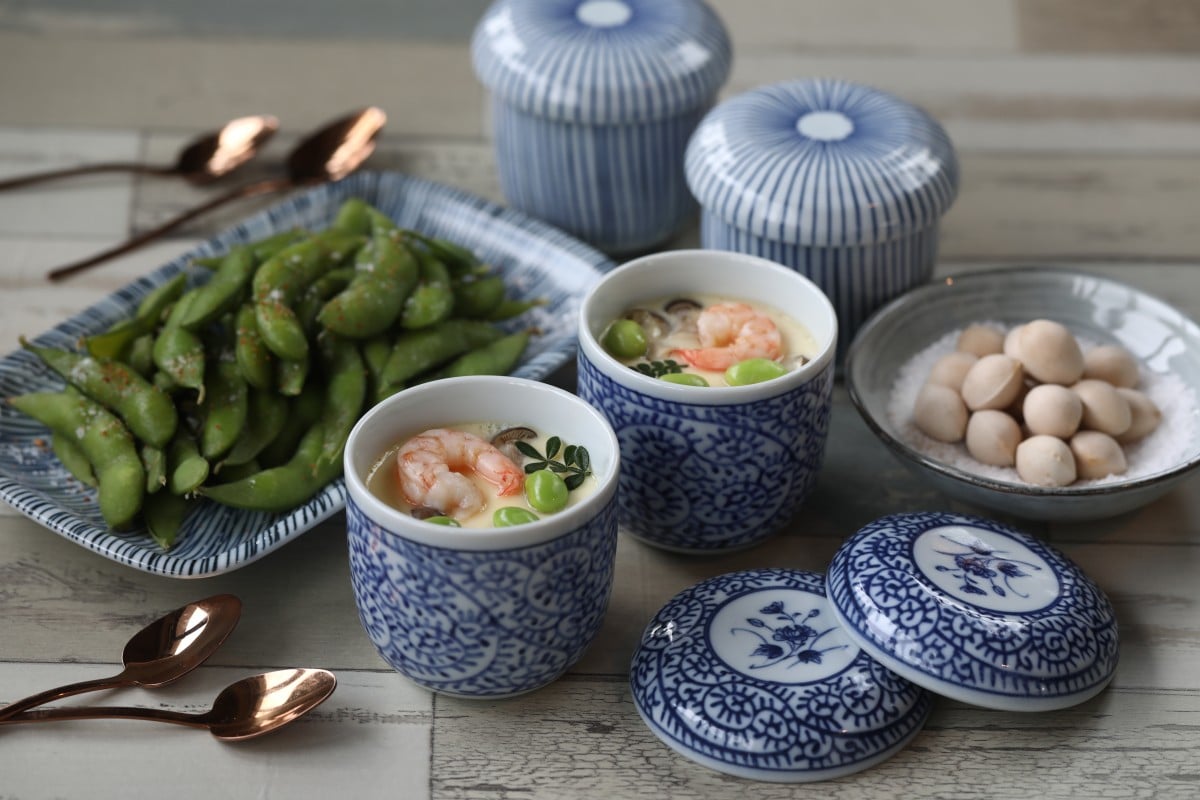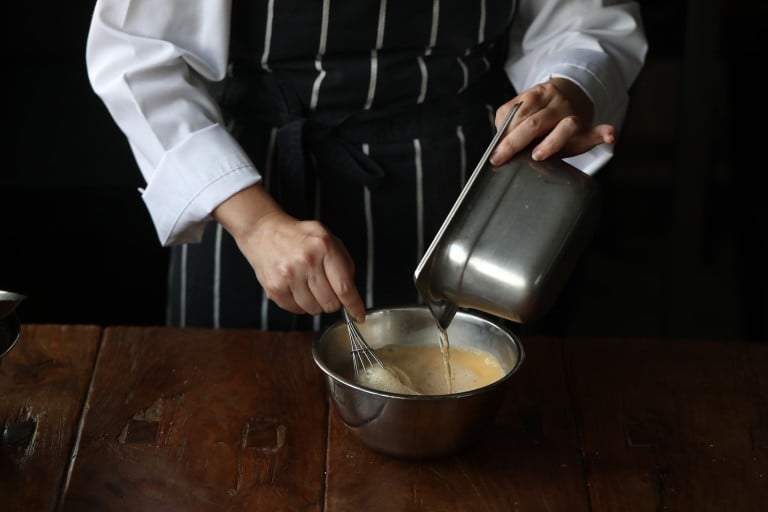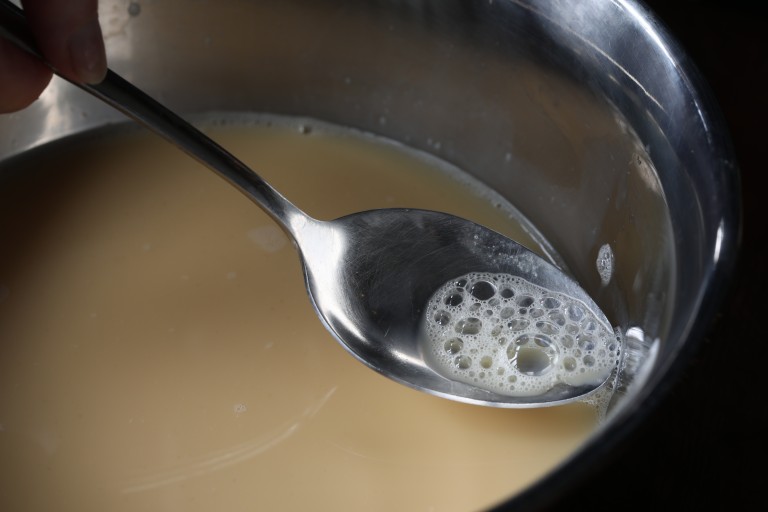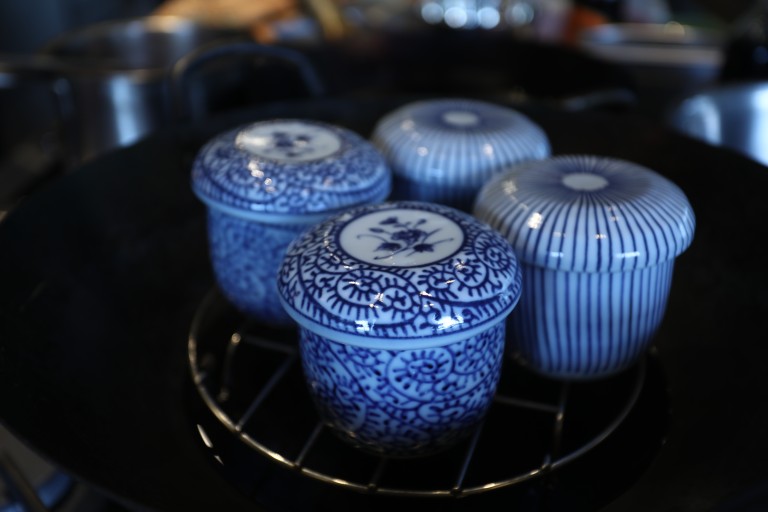
Chawanmushi is an elegant, delicate savoury steamed custard often served at Japanese restaurants, but it’s also easy to cook at home. It gets its name because traditionally, the custard mixture and other ingredients were poured into teacups (chawan) before being steamed.
Don’t use the elegant bowls reserved for tea ceremonies, because those are too large. At Japanese department stores, you can find special chawanmushi cups with lids, but if you don’t have them, regular teacups (preferably straight-sided ones without handles) that hold about 200ml each will do; you’ll need to cover them tightly with foil, so the condensation from the steamer doesn’t drip in.
You need a special type of white soy sauce for chawanmushi. It’s not actually white, but it is very pale in colour – about the shade of mirin. Don’t use light soy sauce as it will turn the custard mixture an unpleasant greyish-brown. If you can’t find this white soy sauce, mix in some salt, instead.
Dashi bags look like tea bags, and need only to be soaked in boiling water to make a flavourful stock. Buy the type that contains katsuobushi (dried skipjack shavings) and kombu (sea kelp).
Edamame pods are sold raw and fresh, or cooked and frozen. The latter are easier to use – they just need to be thawed. If using fresh edamame, trim off the ends, then cook the pods in boiling salted water until done before draining, rinsing with cold water and draining again.
Kinome is a plant that belongs to the prickly ash family and is related to the Sichuan pepper. The plant has small leaves that are dried to make sansho powder. The fresh leaves – sold on short stalks – are available in the produce section of Japanese supermarkets. If you can’t find kinome, just leave it out.
Put the dashi bag in a heatproof cup and add 330ml (1⅓ cup) of boiling water. Soak for about three minutes, then remove the dashi bag and squeeze it to remove the water. Discard the bag and leave the dashi to cool to room temperature.
Put the white soy sauce (or salt) and mirin in a small saucepan over a medium flame. As soon as the mixture simmers, turn off the flame and pour it into the dashi broth.
Crack the eggs into a bowl and whisk thoroughly.

Pour the dashi and mirin mixture into the bowl with the eggs and stir gently until thoroughly combined. Pour the mixture through a fine sieve into another bowl.
Peel the shrimp (reserve the heads and shells to make shrimp stock or oil for another dish).
Boil a small pan of water, add the ginkgo nuts and simmer for five minutes. Leave the ginkgos in the water, and as soon as they are cool enough to handle, remove the shells and papery skin. They peel easier when hot. Place the peeled ginkgos onto a plate.
Remove and discard the pods from the cooked edamame beans. Dry the beans with paper towels.
Trim the shimeji mushrooms so the caps with stems are about 2.5cm (1 in) long.

If there are any bubbles on the surface of the custard, use a spoon to skim them off.
Carefully pour the custard mixture into four tea cups. Into each cup, place two shrimp, two ginkgos, two shimeji mushrooms and several edamame beans. You should have four each of shrimp, ginkgos and shimeji, and four to eight edamame beans for the garnish.
Cover the teacups with their lids, or use a square of aluminium foil to cover each one tightly.

Place the cups in a steamer (or on a low-footed rack in a wok). Pour hot water to a depth of about 2.5cm (1 in) in the base of the steamer or wok and bring to a boil over a high flame. As soon as the water boils, place the lid on the steamer or wok, then lower the flame to medium.
Steam the custards for eight to 10 minutes, or until very softly set.
Remove the teacup lids and carefully arrange on the top of each custard one shrimp, one ginkgo, one shimeji mushroom and one or two edamame beans. Cover again with the lids and steam for two more minutes, or until the custard is done – it will wobble gently when you shake it, but there shouldn’t be any liquid spots on the surface.